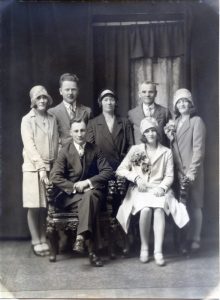General issues
Copyist errors
Most of the records in this collection were scanned from pages that are hand-written copies of the originals. These copies were made at periodic intervals by Church authorities and stored at central locations. The original birth, death, and marriage books remained in the parish, and most of them have been lost through fires and the ravages of history. Sometimes, though, the original books have survived. Occasionally we encounter anomalies that can only be explained as copyist errors, and whenever possible we refer to the original books in order to confirm our suspicions. Often, we can only guess.
For examples, see
Note 2: Missing birth record for Josaphat Telep
and
Note 3: Theodor Młynar of House 29.
Identifying people who have no primary records
Many people are mentioned in the birth, death, and marriage records of their descendents, but since they were born or got married before the record-keeping started in 1785 it is often difficult to identify them and make them part of a family's pedigree, especially if they have a common name. I have tried to lay out my process for identifying such people; see for example
Note 6: Anastasia Dudra's father.
Identifying people who used nicknames or aliases
Aliases were in widespread use by both men and women and we can see many examples of a person's surname changing from one thing to another and back again over time. This makes constructing family pedigrees sometimes challenging, but it also reveals some family connections that might not have been evident otherwise.
Examples of this phenomenon are discussed in
Note 5: Thomas Prokopik alias Młynar and
Note 3: Theodor Młynar of House 29.
Approximating the year of birth
The most authoritative source for date of birth is a person's birth record. When there is no birth record, we try to use the Age column in the marriage record, when available, to derive the year of birth. When there is more than one marriage record, the earliest one is used, since it is generally the one vetted most closely (to prevent young people who have not reached the age of majority from marrying without parental consent).
The age that is reported on the death record is regarded as the least reliable, especially for the extremely elderly who have out-lived their contemporaries. This information is used only as a last resort.

